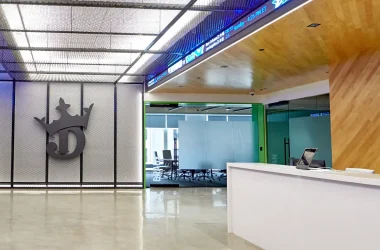If you think artificial intelligence is only for Silicon Valley software outfits, Cintas would like a quick word. The company that outfits workers, stocks first-aid cabinets, and keeps restrooms from turning into slip zones is rolling AI into the heart of its daily work. Not as hype, but as a practical system that helps thousands of employees answer customer questions faster and make smarter decisions on the fly. It’s the kind of story that rarely makes a splashy headline, but it tells you where the real action is happening.
The headline proof came in spring 2024. Cintas announced an expanded partnership with Google Cloud to build an internal, generative-AI knowledge center on Vertex AI. The goal sounds simple: give frontline teams a single place to find answers across contracts, product specs, and service playbooks, then turn that speed into better customer experiences. Under the hood, it’s a big shift. Centralized data. Smarter search. Fewer swivel-chair moments. More time for actual service.
Here’s the bit that stood out. Cintas said the system would use Vertex AI Search to navigate “large sets of Cintas contracts, documents, and its product library,” so employees can find critical information quickly and respond with fewer handoffs. Google backed that up on its own channels, describing how Cintas is developing gen-AI powered search engines to boost productivity and accuracy across customer service and sales. The language may be corporate, but the meaning is clear: this is operational AI, not a demo.
So what does the AI actually do?
Think of the knowledge center as a fast, context-aware brain for the company’s everyday questions. A rep takes a call. The customer asks about flame-resistant garments, replacement cycles, or a pricing clause that lives in page 37 of a contract signed three years ago. Instead of digging through shared drives or emailing a specialist, the rep queries the AI search tool and gets the relevant paragraph, the linked spec, and any policy notes that matter. That reduces call time and error risk and, importantly, it reduces the chance that a customer hears “let me check and get back to you.” Cintas says the whole point is to elevate the experience by making key information easy to find. Google frames it the same way: faster access, better decisions, fewer mistakes.
Cintas’ chief executive, Todd Schneider, put it bluntly in the announcement: empowering “employee-partners with innovative technology” is central to the company’s digital push, and the “gen-AI powered knowledge center” is a prime example of that investment. When a CEO uses that kind of language, it usually means budgets, timelines, and accountability are already in motion. Thomas Kurian, Google Cloud’s CEO, echoed the angle from the platform side, saying the knowledge center is designed to help employees “derive key insights, identify opportunities, and reduce errors.” Those are business verbs, not science-project verbs.
A quick reality check from the CIO seat
Press releases are nice, but you learn more when a CIO talks through the messy middle. In an interview with CDO Magazine, Cintas CIO Matthew Hough described how the company is using AI where it genuinely helps, like recommending the right products to the right customers and supporting customer service with smarter retrieval. He also cautioned against bolting AI onto shaky processes or bad data, calling for a broader business view first so you don’t “amplify underlying foundational issues.” That’s a refreshing dose of pragmatism from a company that has to coordinate thousands of routes and millions of items in circulation.
You can see the connective tissue: AI that speeds up answers, models that suggest the next best offer, and a culture that insists on clean data and clear workflows before pressing the big red button. It’s the opposite of shiny-object syndrome. It’s AI with a clipboard and a task list.
Beyond service desks: where else AI fits at Cintas
Customer service is where the story starts, not where it ends. Google notes that Cintas is applying Vertex AI Search for sales teams as well, which makes sense when you consider the company’s scale. More than a million customers. Thousands of reps and route drivers. A product catalog that ranges from uniforms to fire protection. If an inside seller can pull up a contract term, a lifecycle note on garment durability, and a relevant upsell suggestion in one go, the conversation shifts from “I’ll get back to you” to “Here’s the plan.”
There are signs the AI thread runs through operations, too. A detailed industry blog from Lemongrass recounts a talk with Cintas’ CIO about moving core workloads to Google Cloud, modernizing SAP, and then using AI on top of that cleaner foundation. The post highlights examples like weather-aware recommendations for safety mats before storms and AI-assisted code generation targets on engineering teams. While that article is commentary from a consulting firm, it lines up neatly with what Cintas and Google have already made public about Vertex AI Search and the focus on practical wins over flash.
If you’ve ever watched a route-based business at work, you know why this matters. When a uniform repair is due, when a first-aid cabinet is out of burn gel, when a facility needs seasonal mats before the first snow, timing is everything. AI can help nudge those moments. Not by replacing people, but by queuing the right action at the right time, with context that makes sense in the field.
Speed is good; trust is better
Here’s the thing. AI that fetches the wrong clause faster is just faster wrong. That’s why the governance side is not a footnote. The CIO stressed the need to fix processes and train people, then turn on LLMs. Google’s language also leans heavily on reducing errors and maintaining secure access to company data, not just speed. In other words, Cintas is chasing reliability as much as responsiveness. You can feel the service-company DNA there.
Cintas also did the plumbing work first. The company completed a large migration of legacy apps to Google Cloud before leaning into generative AI, which is exactly how you avoid the “AI on top of chaos” trap. With core systems running in the cloud, data gets more unified, access controls get cleaner, and new services like Vertex AI Search slot in with fewer surprises. The company and Google both called this out: Kubernetes for app modernization, migration of enterprise apps, then gen-AI powered tools that sit on a sturdier base.
What customers actually feel
Most customers will never know there’s a vector database behind the scenes. They’ll feel shorter calls, clearer answers, and reps who seem to remember details without scrambling. They’ll notice when a sales conversation anticipates safety needs before the rainy season. They’ll notice when a service ticket closes the first time. That’s the promise baked into the quotes from both CEOs. Faster insights. Fewer mistakes. More personalized value. It sounds lofty, but in a route-heavy operation the payoff shows up as fewer return visits and less friction.
And while it’s early days, Google has continued to highlight Cintas as a real-world example of gen-AI in production. That matters for two reasons. First, it’s a signal that internal adoption isn’t just a pilot. Second, it nudges competitors. When a market leader turns AI into better service, others notice, and pretty soon “we’ll look into it” becomes “we need this yesterday.”
The tone from the top
Let’s linger on the quotes because they tell you how the company frames the work. Todd Schneider called out “empowering our employee-partners” and “elevate the Cintas customer experience” as the core of the investment. That’s not a side project. It’s a narrative that says the tech exists to make people better at their jobs. From Google’s side, Thomas Kurian hit on “derive key insights,” “identify opportunities,” and “reduce errors.” Put together, you get a shared thesis: great service comes from great information, delivered at the moment of need.
The CIO adds the cautionary voice: don’t paste AI on top of broken processes, and don’t hand powerful tools to untrained teams. Fix the foundation, then go faster. That blend of ambition and restraint is exactly what you want in a company responsible for safety gear, fire protection, and compliance-sensitive uniforms.
A small contradiction worth embracing
Here’s a fun paradox. AI is often sold as magic, yet the real win at Cintas is unglamorous. It’s search that actually works. It’s contracts you can find. It’s a spec sheet that appears when a customer needs it. Maybe that feels almost too ordinary. But ordinary at scale—across a million customers and eleven-plus thousand routes—adds up to something big. Sometimes the boring improvement is the bold one.
What to watch next
One signal to track is whether Cintas broadens its AI footprint from knowledge retrieval toward recommendation engines that consistently suggest the next action for service teams and sellers. The CIO has already talked about product fit models for customers and the importance of clean data. Pair that with Google’s public emphasis on sales and service use cases and you can sketch the arc: from finding answers to anticipating needs. If the company keeps sharing progress, expect more references to measurable outcomes like faster handle times, higher first-contact resolution, and increased cross-sell where it makes sense.
Another angle is developer productivity. External commentary suggests Cintas is experimenting with AI-assisted coding to speed internal software delivery. That’s inside-baseball stuff, but it matters because faster iteration tends to surface in better mobile tools for drivers and reps. When the handheld app gets smarter every few weeks instead of every few quarters, frontline teams notice.
The bottom line
Yes—Cintas is using AI, and not as a novelty. The company built an internal, generative-AI knowledge center on Google’s Vertex AI, with clear intent to improve customer service and help sales teams move faster with fewer errors. The CEO framed it as a core investment. Google put its name on it and keeps pointing to Cintas as a live example. The CIO has been frank about where AI helps and where caution is smart. If you’re trying to understand how AI shows up in real businesses—not slides, but service calls—this is a case worth bookmarking.








